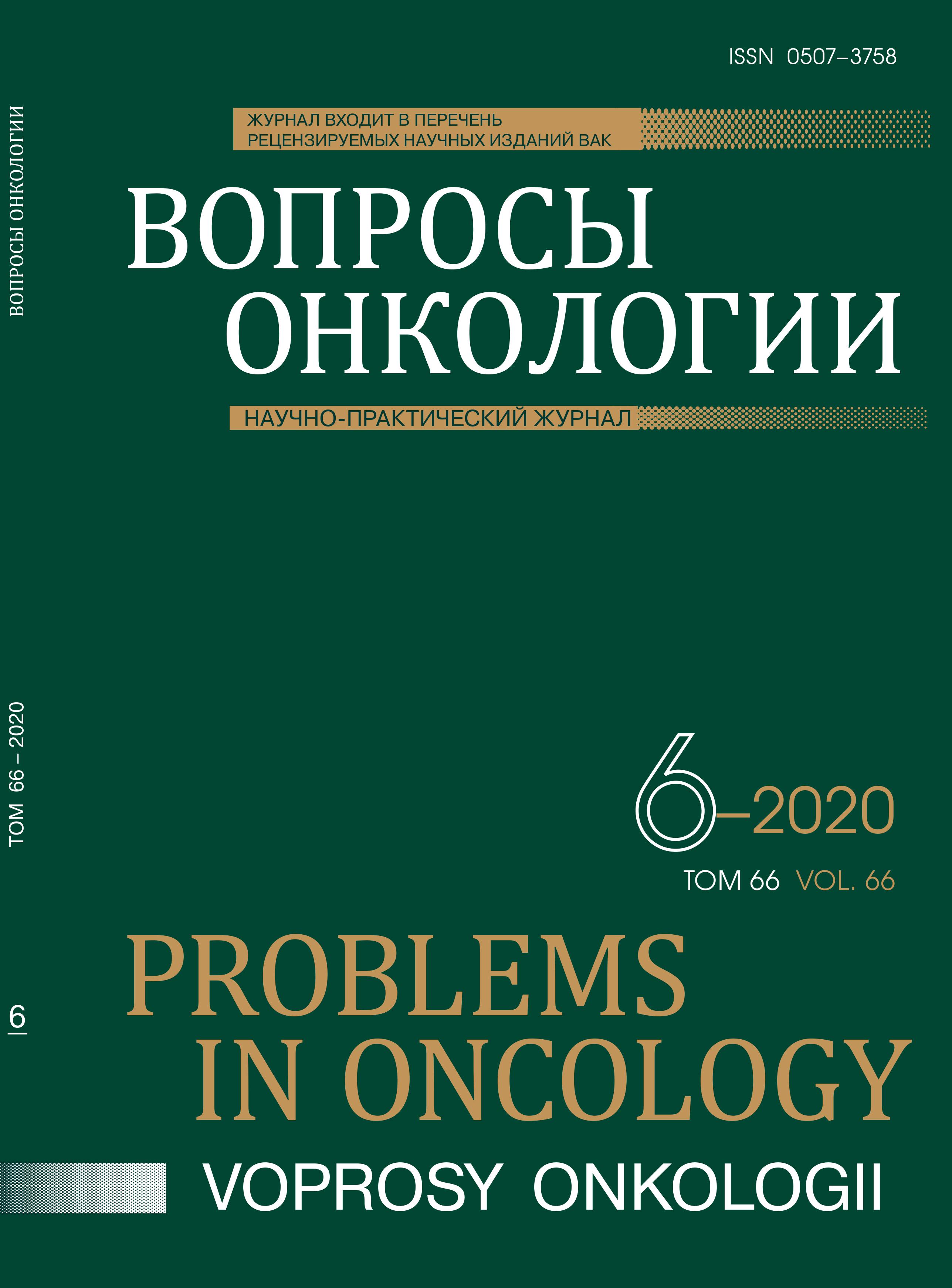Abstract
Objective: to summarize the experience of treatment patients with resistant forms of gestational trophoblastic neoplasia (GTN). Materials and methods: results of treatment of 15 patients with resistant forms of GTN treated in the N.N. Petrov Research Institute of Oncology through the period 01.01.10-12.11.19 were analyzed. Results: In three out of the 15 patients the tumor was initially characterized as the low-risk (3/15, 20%), the remaining 12 women were from the high-risk group (12/15, 80%). Four out of 12 high-risk patients were ultra-high risk (> 12 points according to the FIGO classification). In low-risk patients with resistant GTN forms EMA-CO therapy proved to be effective as the second line chemotherapy. In eight high-risk patients the combined treatment included the surgical component (hysterectomy in 3 cases, thoracotomy with metastasectomy in 3 cases, hysterotomy with excision of the tumor in 1 case, excision of the tumor from the abdominal wall - in 1 case). In three cases of ultra-high risk GTN, the EMA-EP chemotherapy proved effectiveness, in one of them - without a combination with surgical treatment. Combined treatment was performed in two other cases: in one case with chemotherapy was followed by thoracotomy, metastasectomy, in another - by a gamma knife radiotherapy of brain metastasis. Conclusion: even in cases of low-risk GTN careful monitoring of patients is required, despite adequate treatment among resistant forms. After the failure of methotrexate monochemotherapy with low-risk GTN patients can be successfully treated with EMA-CO chemotherapy. Only rare histological forms (epithelioid trophoblastic tumor, placental site trophoblastic tumor) are not sensitive to drug therapy and require surgical treatment. In cases of ultrahigh-risk GTN with resistance to 1st-line chemotherapy an EMA-EP regimen is effective with or without surgical intervention. Residual “tumor nodes” after completion of treatment and normalization of the HCG level do not always require surgical removal, their dynamic observation is possible, because according to the results of observations, when they were nevertheless excised, no histologically viable tumor tissue was found.
References
Kaur B., Short D., Fisher R.A. et al. Atypical placental site nodule (APSN) and association with malignant gestational trophoblastic disease; a clinicopathologic study of 21 cases. Int J Gynecol Pathol. 2015 Mar;34(2):152-8.
Ning F., Hou H., Morse A.N., Lash G.E. Understanding and management of gestational trophoblastic disease. F1000Res. 2019 Apr 10;8:F1000 Faculty Rev-428.
Banerjee D., Barsode S.D., Basu P. Management of Gestational Trophoblastic Diseases-An Update.Rev Recent Clin Trials. 2015;10(4):255-62.
Alazzam M., Tidy J., Hancock B.W. et al. First-line chemotherapy in low-risk gestational trophoblastic neoplasia. Cochrane Database Syst Rev. 2012 Jul 11;7(7):CD007102.
Alazzam M., Tidy J., Osborne R. et al. Chemotherapy for Resistant or Recurrent Gestational Trophoblastic Neoplasia Cochrane Database of Systematic Reviews. 2016;Issue 1. Art. No.: CD008891.
Cyriac S., Rajendranath R., Sridevi V. et al. Etoposide, cisplatin-etoposide, methotrexate, actinomycin-D as primary treatment for management of very-high-risk gestational trophoblastic neoplasia. Int J Gynaecol Obstet. 2011 Oct;115(1):37-9.
Ngan H.Y.S., Seckl M.J., Berkowitz R.S. et al. Update on the diagnosis and management of gestational trophoblastic disease. Int J Gynaecol Obstet. 2018 Oct;143(Suppl 2):79-85.
Жарова А.С., Мещерякова Л.А., Масленников А.Ф. и др. Современные возможности лечения резистентных трофобластических опухолей и рецидивов. Доктор.Ру. 2020; 19(1):55–61.
Lurain J.R. Gestational trophoblastic disease II: classification and management of gestational trophoblastic neoplasia. American Journal of Obstetrics & Gynecology. 2011;January:11–18.
Veras E., Kurman R.J., Wang T-L. et al. PD-L1 expression in human placentas and gestational trophoblastic diseases. Int J Gynecol Pathol. 2017;36:146–53.
Bolze P-A., Patrier S., Massardier J. et al. PD-L1 expression in premalignant and malignant trophoblasts from gestational trophoblastic diseases is ubiquitous and independent of clinical outcomes. Int J Gynecol Cancer. 2017; 27: 554–61.
You B., Bolze P.A., Lotz J.P. et al. Avelumab in patients with gestational trophoblastic tumors resistant to monochemotherapy: Final outcomes of TROPHIMMUN phase II trial, cohort A. J Clin Oncol. 2020;38(suppl; abstr LBA6008).

This work is licensed under a Creative Commons Attribution-NonCommercial-NoDerivatives 4.0 International License.
© АННМО «Вопросы онкологии», Copyright (c) 2020
